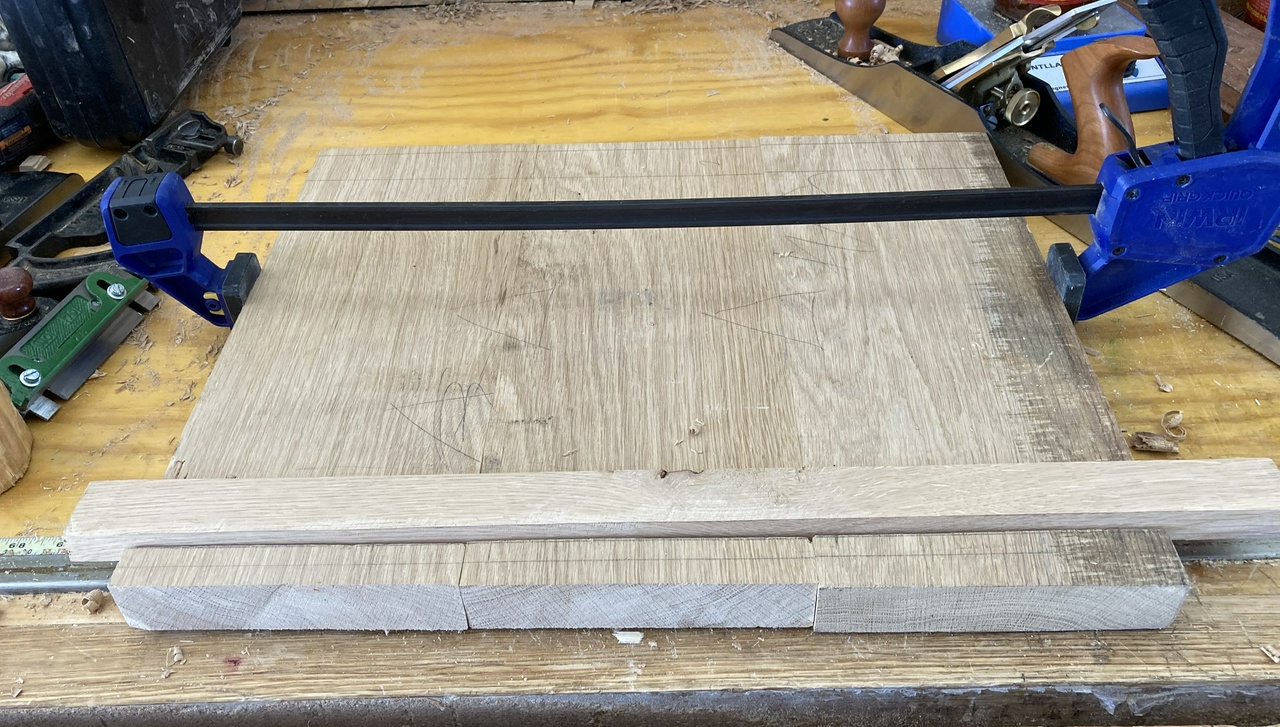Forge Table – #1 Oak top
I bought a little forge for the shop a couple years back. One of the things I'm short on in my shop is flat surfaces, so I decided to build a little table for the forge and associated tools to sit on (the anvil will hopefully get a stump).
I dug through the pile of wood, and found a chunk of 7/4 oak, already planed smooth (so 1½ inches thick), that's 6½ inches wide and 4 feet long. I decided a table top 16×18 inches or so would be about right, so I cut it into three pieces. Then I planed the edges so I could glue the three pieces together.

I cut a couple battens from another piece of oak, and decided I'd put them in with sliding dovetails. So I got out the circular saw and cut a few kerfs about ⅜ inch deep. The battens are about ¾ thick, so that seems right-ish.
The edges of the dados in the top are tapered by dint of going along the edges with a #79 side rabbet plane, held at an angle. The edges of the battens were planed with a jack plane to about the same angle.

The first batten took some fiddle-farting around to get right, but the second went together more quickly, since I realized if I get the edges of the sliding dovetail socket close, it's much easier to make the batten match it than to try and tune the dado to match the batten.

With that done, I glued the edges of the pieces for the top, put a dab of glue in the middle of each batten (the legs will be staked through the batten and top, so I don't want or need to glue in the battens), and clamped things together. In the next session, I'll flatten the top of the table, and start thinking about how tall I'd like it to be.
Contents #woodworking #ForgeTable
Discuss... Reply to this in the fediverse: @davepolaschek@writing.exchange